6.7 The makeup plan
Have you ever heard the quote ‘if you fail to plan, you plan to fail’? This sentiment rings true as an MUA because there are so many factors you need to consider when applying makeup. As you have already learned, the shape of your clients face, eyes, lips, and brows will have a large influence on your application techniques.
Effective consultation with your client is the most crucial part of determining the makeup style you will apply. Most clients will usually have a specific style or look that they want to achieve in mind. Using the knowledge you have learned in this module, you will now be more equipped to confidently explain why you recommend certain looks that will be the best for them in terms of the look they are trying to achieve and the practicalities underpinning this decision. When determining the most appropriate makeup application, at a minimum, you need to consider the clients:
- Skin type, tone and undertone
- Face, eye and lip shape
- Eye colour
- Desired look
- Budget
- Contra-actions and contraindications
You must use your expertise and experience to help guide your client into selecting a realistic option. Managing your clients’ expectations in the initial consultation will prevent any disappointment and will also ensure that you maintain your professional integrity. Going against what is realistic and practical to appease your client may hurt them and your reputation in the long run! For example, if you have a client who really wants her brows to be insta-brows, it may not be the best option as she may look back on her photo’s in years to come and think, ‘What the heck did I do that for?’. While people want to be trendy, your clients will be guided by you in terms of what will look best for their specific event and for years to come, so you will need to use your professional judgement.
As you build your client base and perform a full range of looks and applications, it is an excellent idea to take before and after photos as a point of reference for you and to create a portfolio of examples for clients. As you will learn in this module, there are so many makeup techniques and styles, and this can sometimes be difficult to explain to clients verbally. Having visual examples to reference, even including a comparison between different looks (day makeup, smoky eye or a cut crease), can help you work with your client to determine and explain which style will be most suitable. You might even divide your portfolio into specific face shapes, eye shapes or lip shapes for ease of reference.
You will learn more about how to conduct effective client consultations at the end of this course. For now, you may like to download the client consultation form to get a basic understanding of the sort of information you will need to determine the perfect makeup look for your client.
Face charts
Once you have had the client consultation and you have determined the sort of look the client wants to achieve, a useful next step is to complete a makeup face chart to plan out how you will achieve the desired look.
Key phrase | Makeup face chart: used by makeup artists to test out or plan a look, and it will usually include all the products used with a visual representation of the end look. Because certain looks can include lots of products, face charts are an excellent way to keep track of what products you used on which clients.
Makeup face charts are critical when you are starting out as an MUA as they serve as your ‘game plan’ and will guide you through the makeup application process. Even the most experienced MUAs still use face charts because they are useful when you want to recreate looks or when you are applying several of the same makeup applications, say for a Catwalk show. Do you remember the fun fact about Max Factor creating the Pan-Cake makeup range back in the 1930s? Well, the image below is a face chart from 1939 using Pan-Cake:
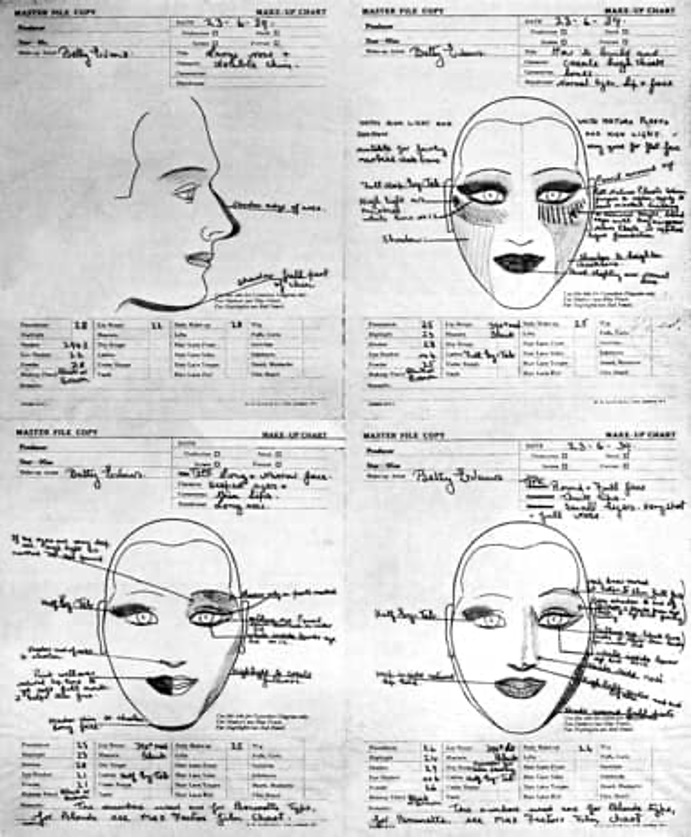
When completing a face chart, you need to determine the following:
- Client’s facial shape
- Highlighting/shading techniques
- Areas requiring correction/camouflage
- Context (client image):
- Business
- Social
- Day/evening
- Special occasion
There are loads of face charts available for download online, and we have included one in the client consultation form. When starting out, you can use normal A4 paper, but for best results, we recommend you use watercolour paper. This type of paper is thicker and will hold products better. Standard printer paper might rip, and you may find that colours are more difficult to blend. When creating your face chart, you will follow the same order of makeup application you will use on a client, except you will skip the skin preparation and finishing touches steps.

When creating your face charts, be sure to list all products and brushes you will use. Keep in mind your colour wheel and complementary colours to create a balanced makeup application. You can use makeup products or coloured pencils to create your face chart. Watercolour pencils work really well. There are loads of completed face charts on Pinterest if you want some inspiration, and some are truly works of art in their own right:
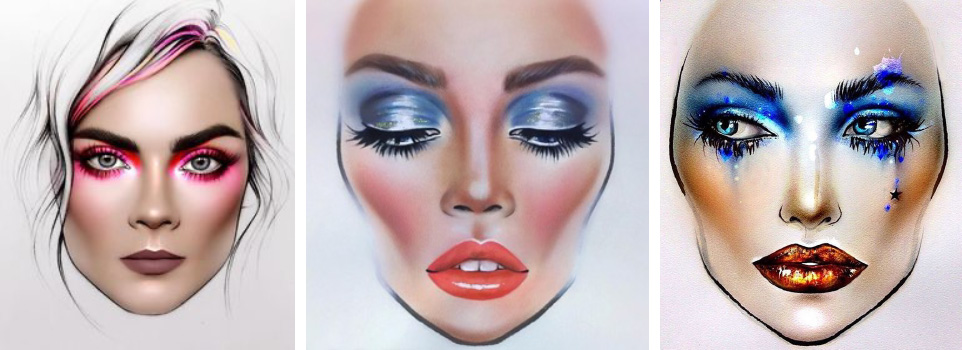
Perfecting face charts takes a lot of practice, but it is an excellent way to test your skills before you begin applying makeup on clients. Once you get into creating them, it can actually be quite relaxing – so pop on your favourite music and quietly blend away! Every MUA will do face charts in their own way, and makeup is a creative art form, so allow yourself to push the boundaries from time to time to see where your creativity takes you.
Below is a Face Chart for use during this course. Simply download and print as many copies as you like:
To see how you can create face charts, watch the videos linked:
If you want some inspiration to improve your face chart skills and to impress your clients, a Moscow based makeup artist @milk1422 has stunning makeup face charts on Instagram that many beauty influencers and MUAs use as inspiration for looks:
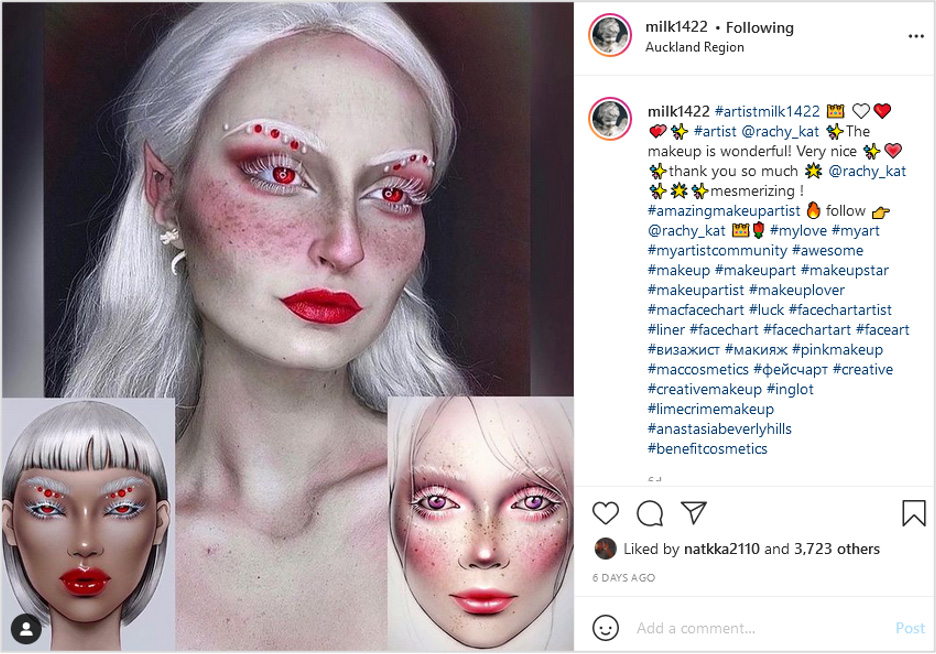
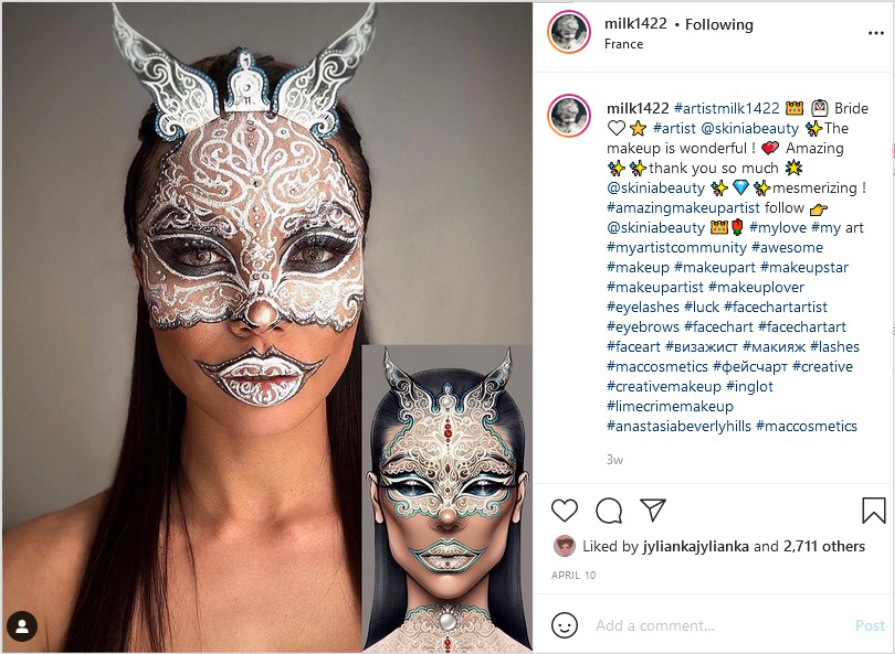
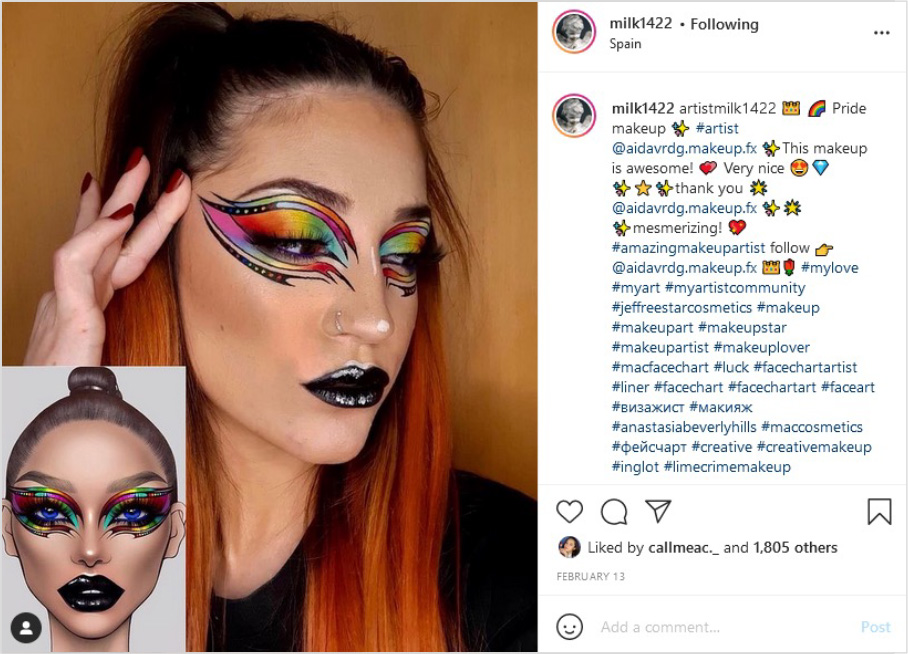
When creating your face charts, be sure to save copies of them and compare photos of your finished looks with them. That way, you will be able to easily identify how well you executed your intended plan and, if for any reason you needed to alter the plan, document why. It might sound like unnecessary administration, but when you begin doing several makeup clients a day, it pays to be organised and to keep track of the work you are doing. Plus, nailing face charts is fabulous for your social media!